THE STRUGGLE FOR A SOCIALLY INCLUSIVE CAMPUS: TAKE FORWARD THE MOVEMENT FOR REDUCTION OF VIVA-VOCE MARKS IN JNU
Ensuring social justice in institutes of higher education and democratizing their admission systems have been two of the major goals for which AISA has striven ever since its formation. It was in light of this democratic and inclusive vision of higher education that the AISA-led JNUSU championed the struggles for reinstating deprivation points and recognition of Madarsa certificates in JNU, and for ensuring the proper implementation of OBC reservation in all higher education institutes of the country. In an overwhelming endorsement and recognition of our struggles and issues, students of JNU reposed immense faith in the organization by giving it a resounding mandate in the JNUSU elections held after a gap of four years on March 1, 2012. The AISA-led JNUSU once again demonstrated its utmost commitment to the aforementioned goals by launching a decisive movement in the very first fortnight of its being elected to office on several crucial issues central to democratizing academics and strengthening JNU’s socially inclusive character. The most urgent among these demands was reduction in the weightage for viva-voce in JNU’s admission system from 30 to a maximum of 10-15, as per the Supreme Court verdict of 1980 given by a five-judge Constitution Bench.
A five-judge Constitution Bench of the Supreme Court had delivered a verdict way back in 1980 stating that maximum weightage for viva marks should be 15%. The verdict of the Ajay Hasia Etc. vs. Khalid Mujib Sehravardi & Ors case states:
“We are of the view that, under the existing circumstances, allocation of more than 15% of the total marks for the oral interview would be arbitrary and unreasonable and would be liable to be struck down as constitutionally invalid.”
Despite this, the weightage of viva marks in JNU continued to be 30% creating the space for subjective biases of various kinds and resulting in several deserving students being denied admission.
Recognizing the ample space created for manipulation owing to high weightage for viva-voce, AISA had raised this issue way back in 2009-2010, while fighting the struggle for ensuring proper implementation of OBC reservation in JNU. In the petition filed by one of AISA’s activists against JNU’s faulty model of OBC reservation in 2010, one of the issues raised was the high weightage for viva marks in JNU’s entrance system. While the High Court, focusing on central issue of the petition, did not address this concern at the time, immediately after the historic Supreme Court verdict of 18 August 2012 that upheld the correct cut-off criterion, AISA called for a public meeting on 29 August 2012 with JNU faculty and Shri P. S. Krishnan to discuss the further challenges ‘in ensuring social justice in Higher Education’, where the focus was on issue of discrimination in viva-voce marking. In fact, two days prior to the meeting, just a day after the written and viva marks were posted online by the JNU administration, AISA also brought out a parcha (dated: 7 August 2012) based on an immediate analysis of the results that revealed how students belonging to deprived castes were being awarded extremely low marks in the viva despite scoring well in the written exam. Since then, AISA consistently made ‘reduction of viva-voce weightage’ one of its central demands and raised it in all appropriate forums.
During the first Academic Council meeting held after the new Vice Chancellor assumed office (21 October 2011), a massive protest demonstration was called where ‘reduction of viva-voce weightage’ was raised as one of the central demands along with the demand for extending recognition to more madarsas and ensuring proper implementation of SC/ST and OBC reservations in Faculty Positions. The note prepared for the JNU faculty prior to the AC meeting carried a detailed discussion of the issue including the reference to the 1980 Supreme Court verdict. The pressure generated by the protesting students forced the Academic Council meeting to decide that this issue would be discussed at various appropriate platforms including the Standing Committee so that a positive decision could be taken before the next academic session. However, when after a month, no action to this effect was taken by the administration; a letter was again sent by the AISA president to the Vice Chancellor, presenting a brief synopsis of the entrance result data posted online by the JNU administration providing support to the claims of discrimination and urging for an immediate action.
As the administration lived up to its legacy of inaction whenever demands pertaining to democratization and social justice have been raised, AISA organised another public meeting on 2 February 2012, to mobilize and unite the students and faculty on this demand. Finally, when AISA was voted back to the JNUSU office, the AISA-led JNUSU immediately set out to collect the entrance result data of past three years and undertake a detail statistical analysis of the same. The analysis led to certain startling revelations. While the primary analysis of the data had provided evidence for discrimination, the detailed analysis revealed the unfortunate extent of it. It was seen how the casteist JNU administration was using the viva-voce as a tool to ensure that the non-reserved category was converted into a reserved category for general students. Students belonging to SC/ST and OBC categories were consistently being awarded marks as low as 0-5 to ensure that they either fail to gain admission, or get selected only in the reserved category. Realising that the students had seen through their designs, the administration first refused to incorporate this demand in the agenda of the AC meeting to be held on 19 March 2012. Armed by strong research evidence, JNUSU called for an indefinite hunger strike from 14 March 2012, which was met with an unprecedented response from the students. For the first time in history of JNU, 33 students sat on an indefinite hunger strike supported by hundreds of others who sat for relay. On the day of the AC meeting on 19 March 2012, hundreds of students gathered outside the venue of the AC meeting responding to the protest called by the JNUSU. The enthusiastic and determined protest outside by the students and the logical arguments provided by the JNUSU office bearers inside the meeting, finally forced the administration to set up a committee which would look into the reduction of viva-voce weightage. Further, this committee which will have representations from JNUSU and JNUTA will prepare its recommendations in two months and inputs from centres and schools will be sought. This is a significant step ahead in the present movement and in order to ensure that this step is transformed into complete victory, the AISA led JNUSU will keep up the mobilisation and struggle in the days to come through multiple forums to make the campus more socially inclusive and democratise its academics.
(Presented below is the note in PDF file prepared by the AISA led JNUSU which was shared in the AC meeting).
JNUSU Note On VIVA marks Reduction-PDF
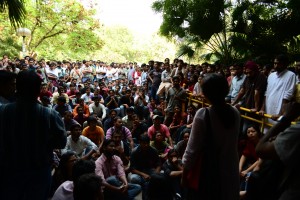
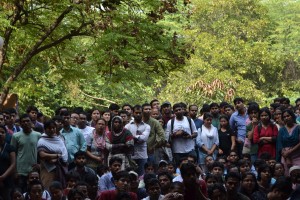
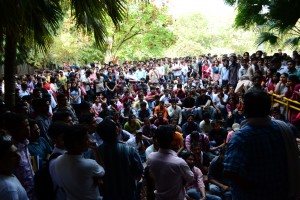
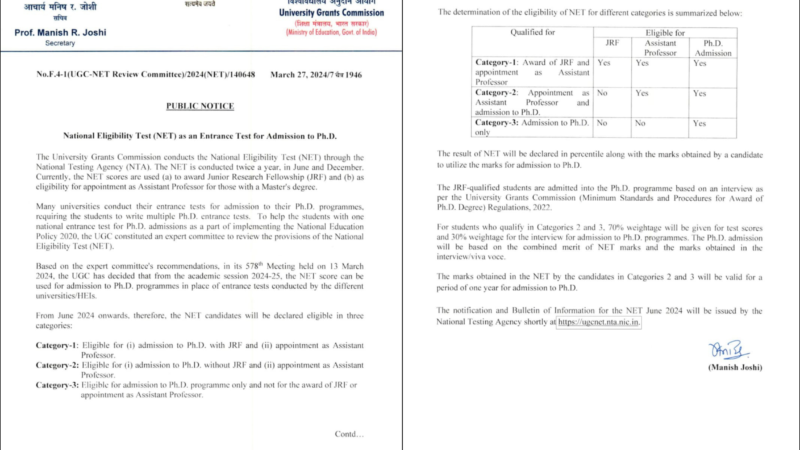
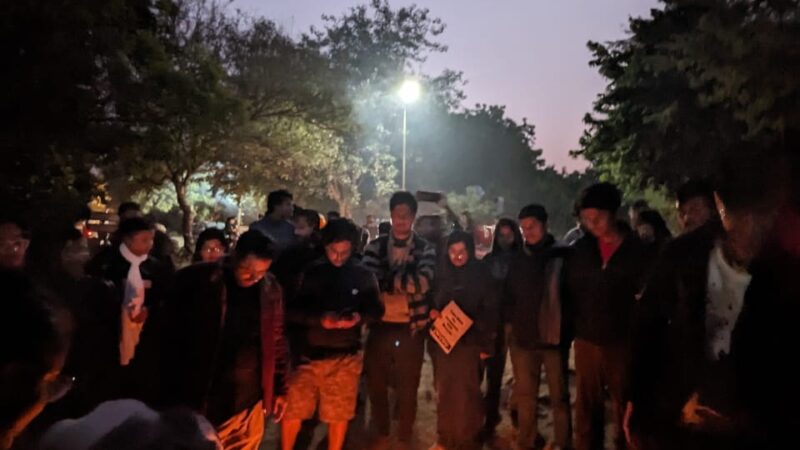
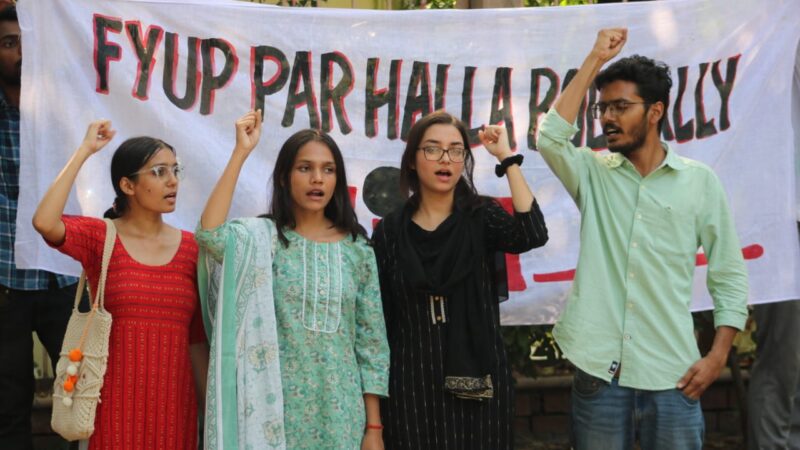
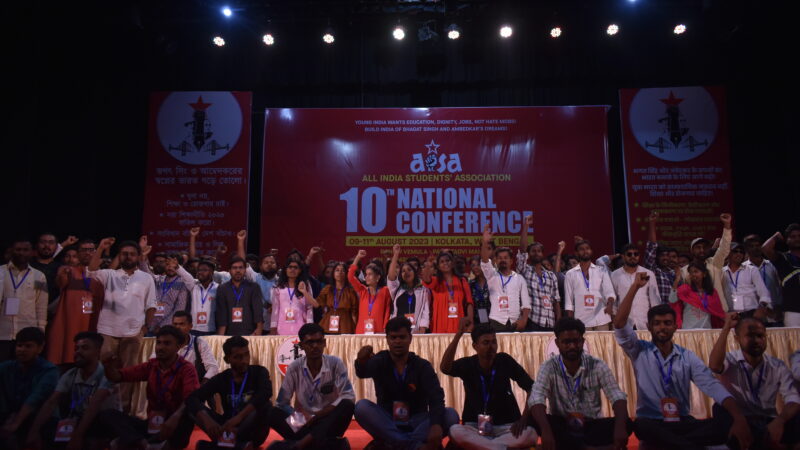
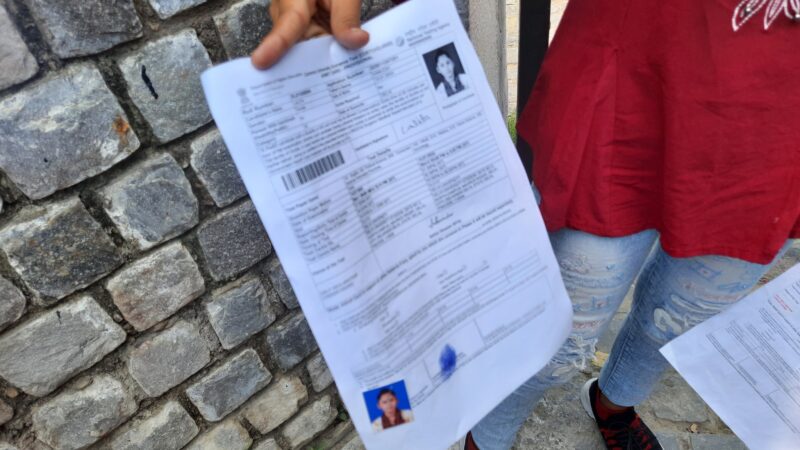
Ensure social justice in institutes of higher education and democratizing their admission systems…
long live social justice
long live AISA